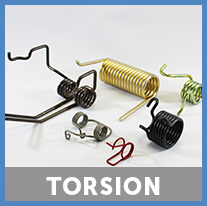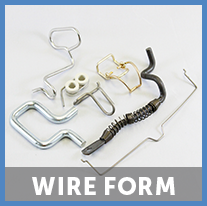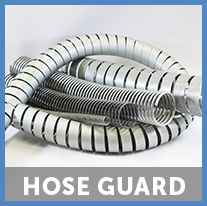The following are a number of areas that must be considered when testing spring loads.
Load tester capacity: One of the most common load testing problems is trying to check a spring load on a scale that is too big for the load. At Rockford Spring, we have a full range of scales. We have at least one of each of the following, 2#, 6#, 20#, 50#, 100#, 200#, 500#, 1000#, and a 1500#. It is important to have the full range so you are not forced into checking a spring on a scale that is really too big for it. Depending on the accuracy of the scale, the load should not be below 10% to 20% of the capacity of the scale.
Load cell deflection: Every load cell will deflect as a load is applied. It is important to remember to compensate for this load cell deflection when testing. Most newer computerized testers will do this compensation automatically.
Load cell and height calibration: Spring testers must be calibrated on a regular schedule. Master weights should be traceable to the NIST. Load cells should be tested and calibrated throughout the usable range of the tester to make sure that the load cell is linear throughout it's range. Height readings should be calibrated with gage blocks throughout the range of the scale.
Load cell alignment: Make sure the top platen is parallel to the load cell platen. This can be done by bringing the platen down on a gage block and moving the gage block around the outside of the load cell. These should be parallel to each other within a couple thousandths of an inch. This is usually adjustable with shims or adjusting screws.
Friction and hysteresis: Friction is a factor whenever the spring touches the fixturing. This is true for all torsion springs operating over a pin and for compression springs fixtured over a pin or in a bore.
There is even some hysteresis when checking a compression spring that is not over a pin. This is because the coils wind-up when compressed, and the end coils twist and move on the platen. Platens can be put on bearings to eliminate this effect for extremely precise springs, but the customer and supplier need to agree on a method to make sure they will get consistent results.
Oil will reduce the friction, but the best solution for a torsion spring is to test the load while approaching the load point and then test it again after going past the load point (10 or 15 deg) and approaching the load point while coming back down in load. Take the average of these two readings. This averages out the friction or hysteresis. Make sure to check that the amount of over travel does not cause a set of the spring.
The most important consideration is communication between the customer and supplier to make sure that both parties are checking the same way. Once a method is chosen, a Gage R&R should be done to verify an acceptable repeatability.
Leaning or squareness effect on load: Most compression springs will lean a little bit. This is called squareness, and can effect the load testing of the spring. If one end leans more than the other end (which is quite common), the load may be different when checking it standing on one end, verses checking it on the other end. Squaring the spring up by hand or putting it over a pin will give yet a third value for load. When this effect is significant, it is important for the customer and supplier to agree on a measurement method.






